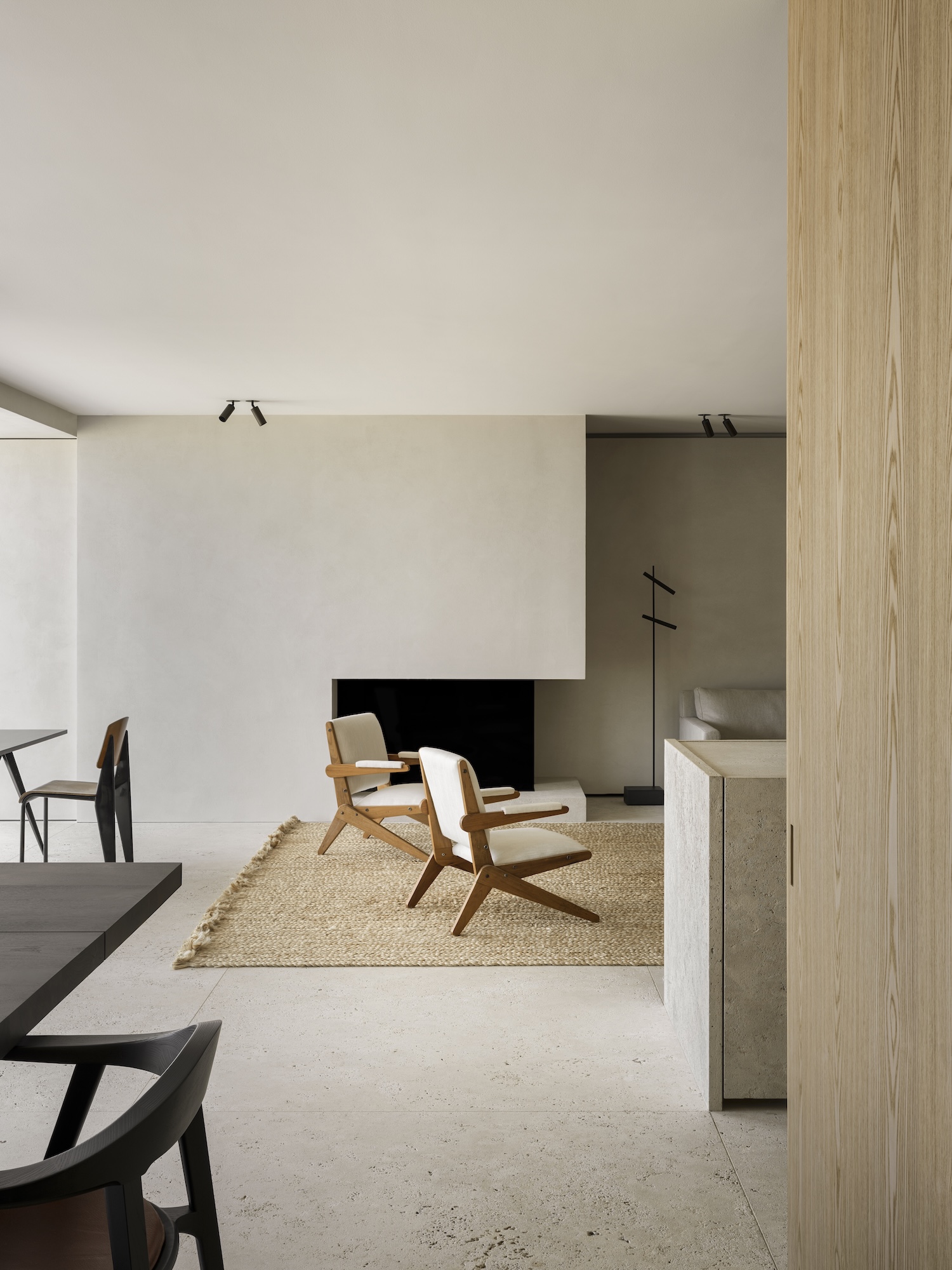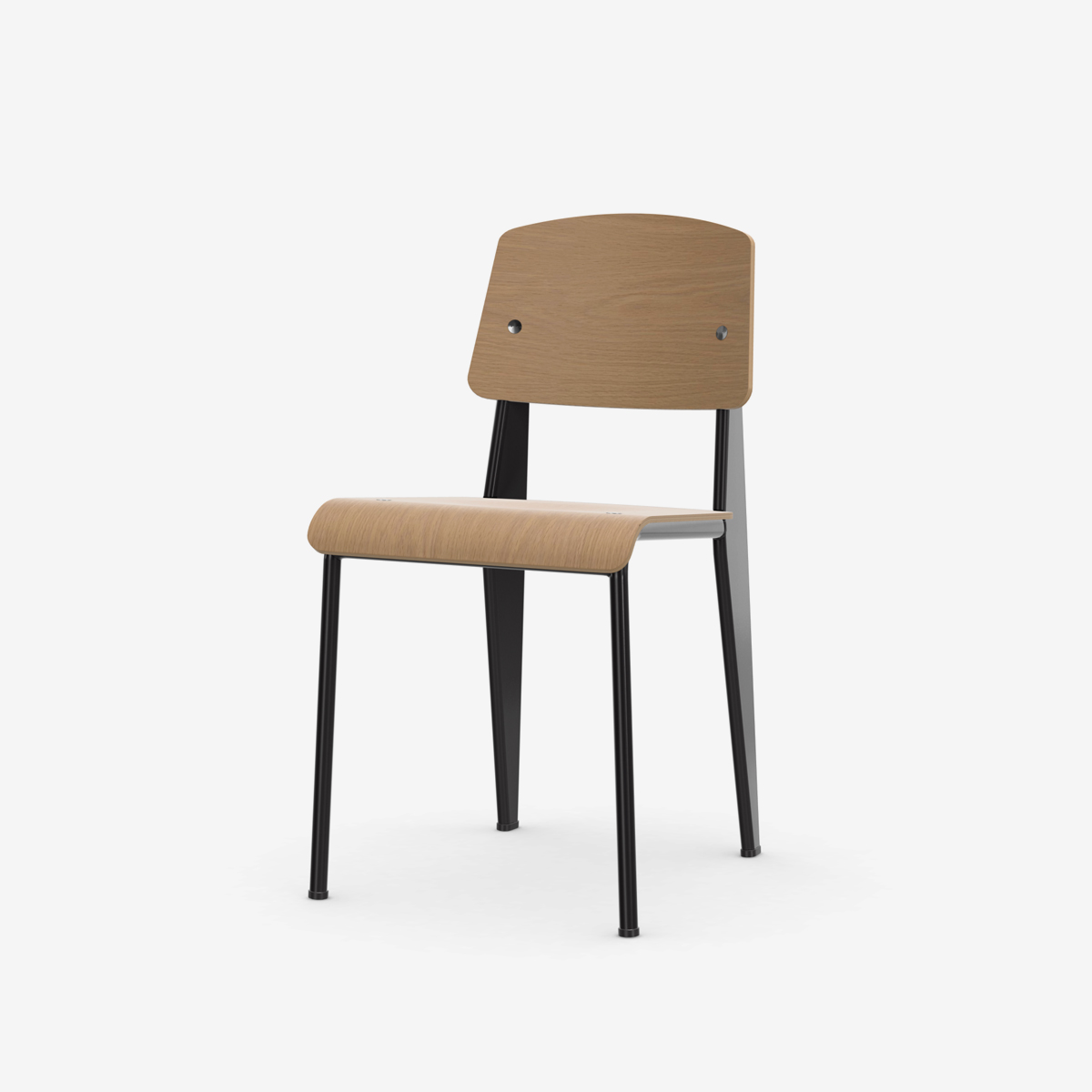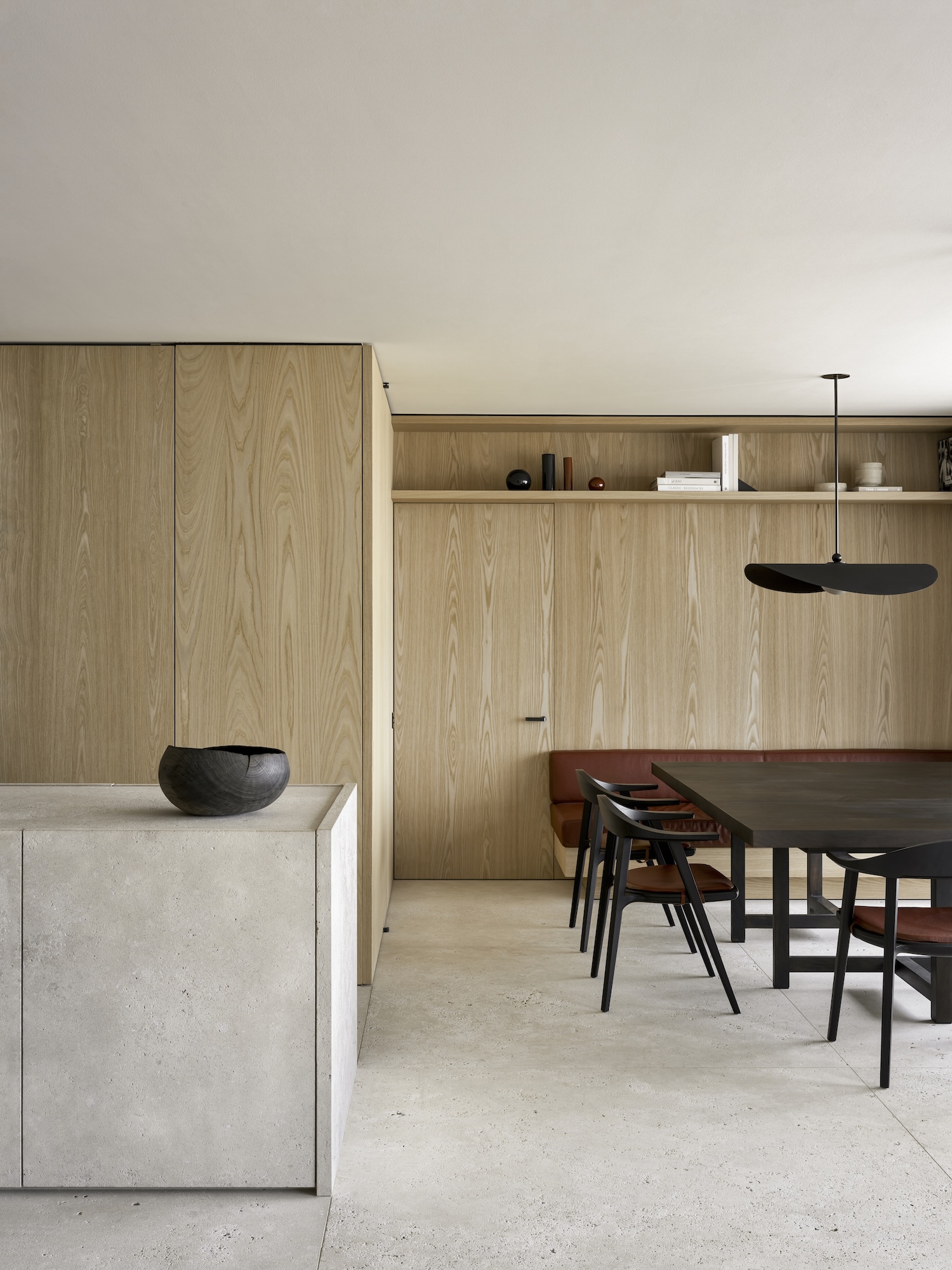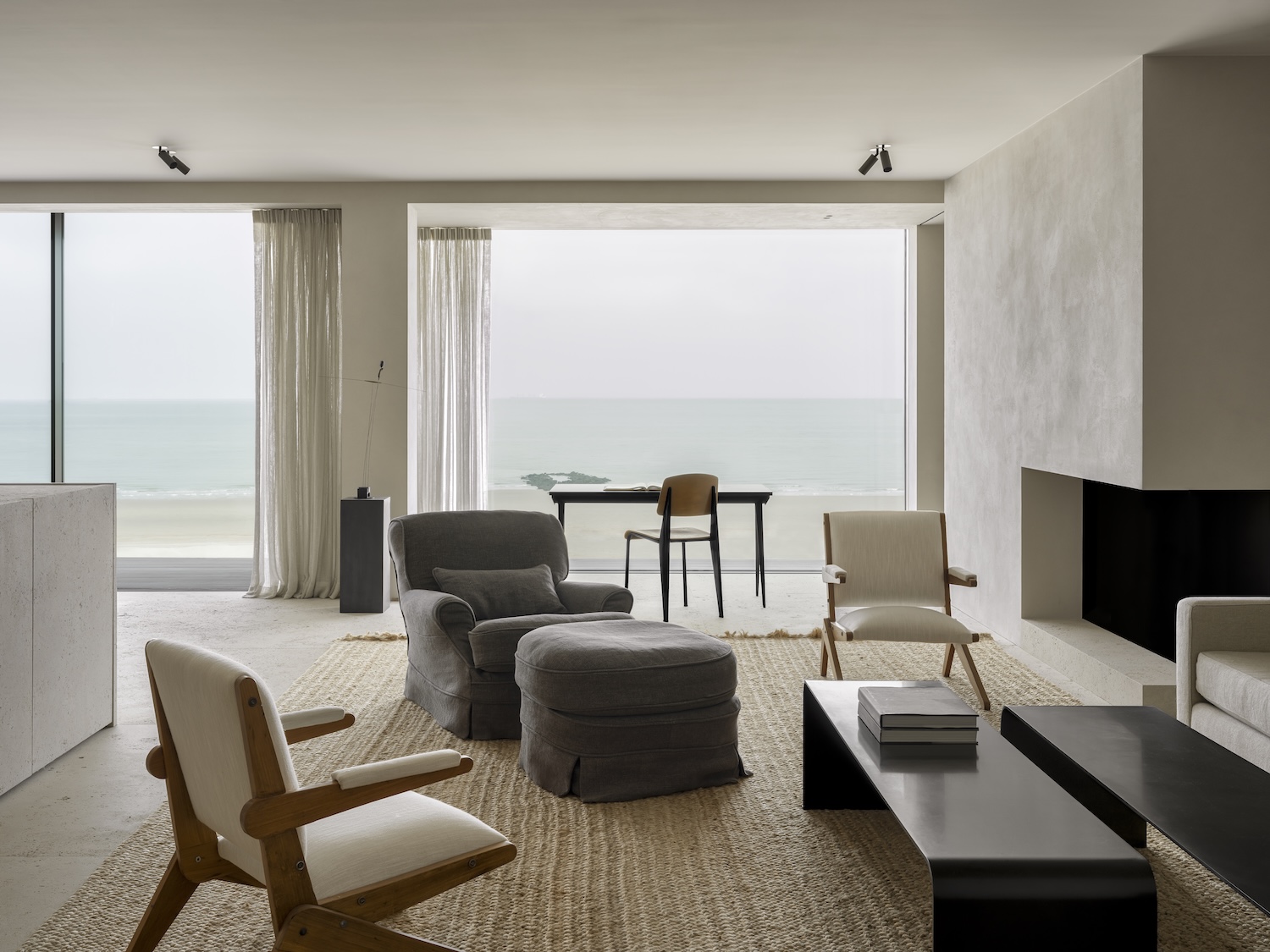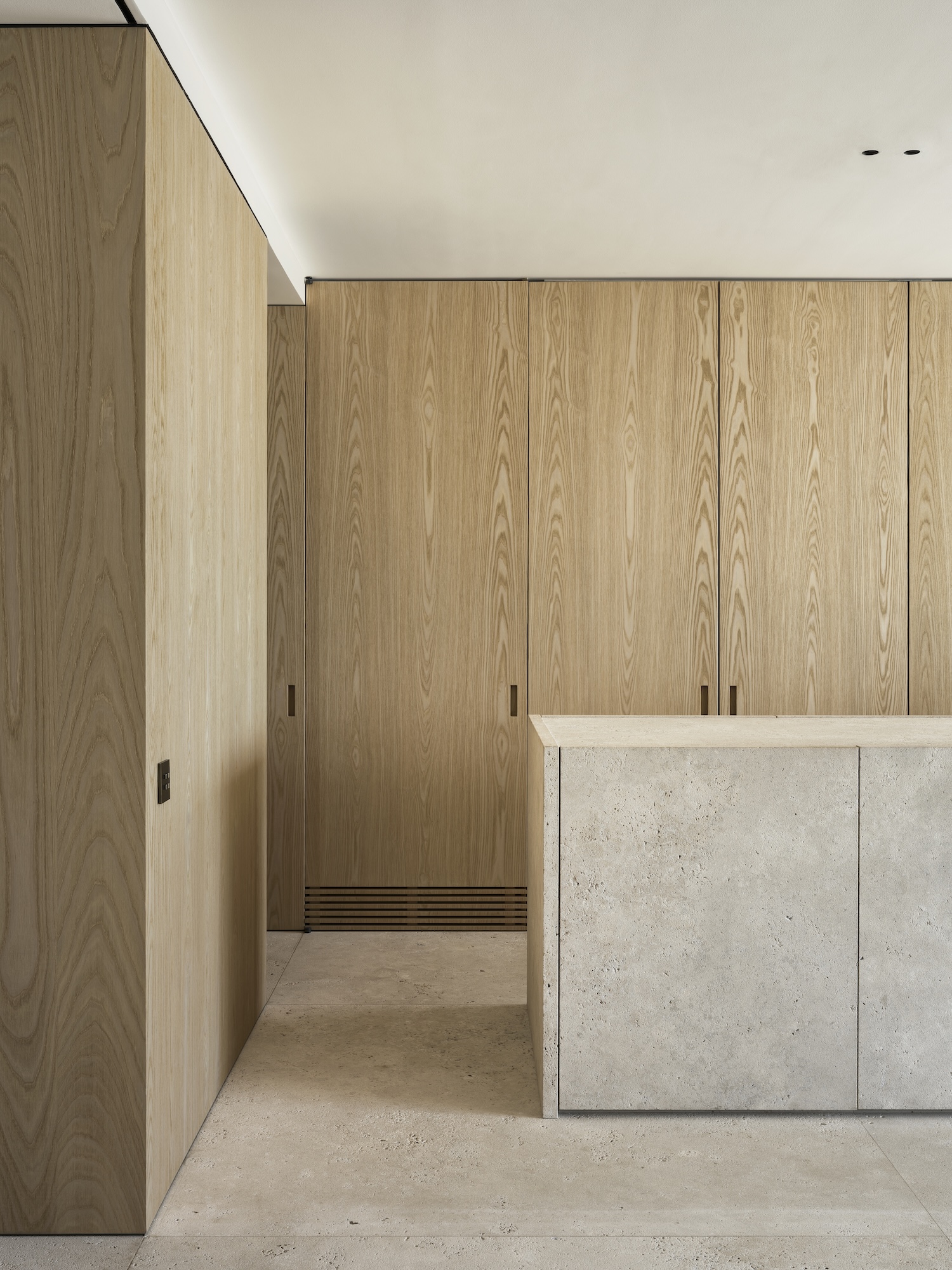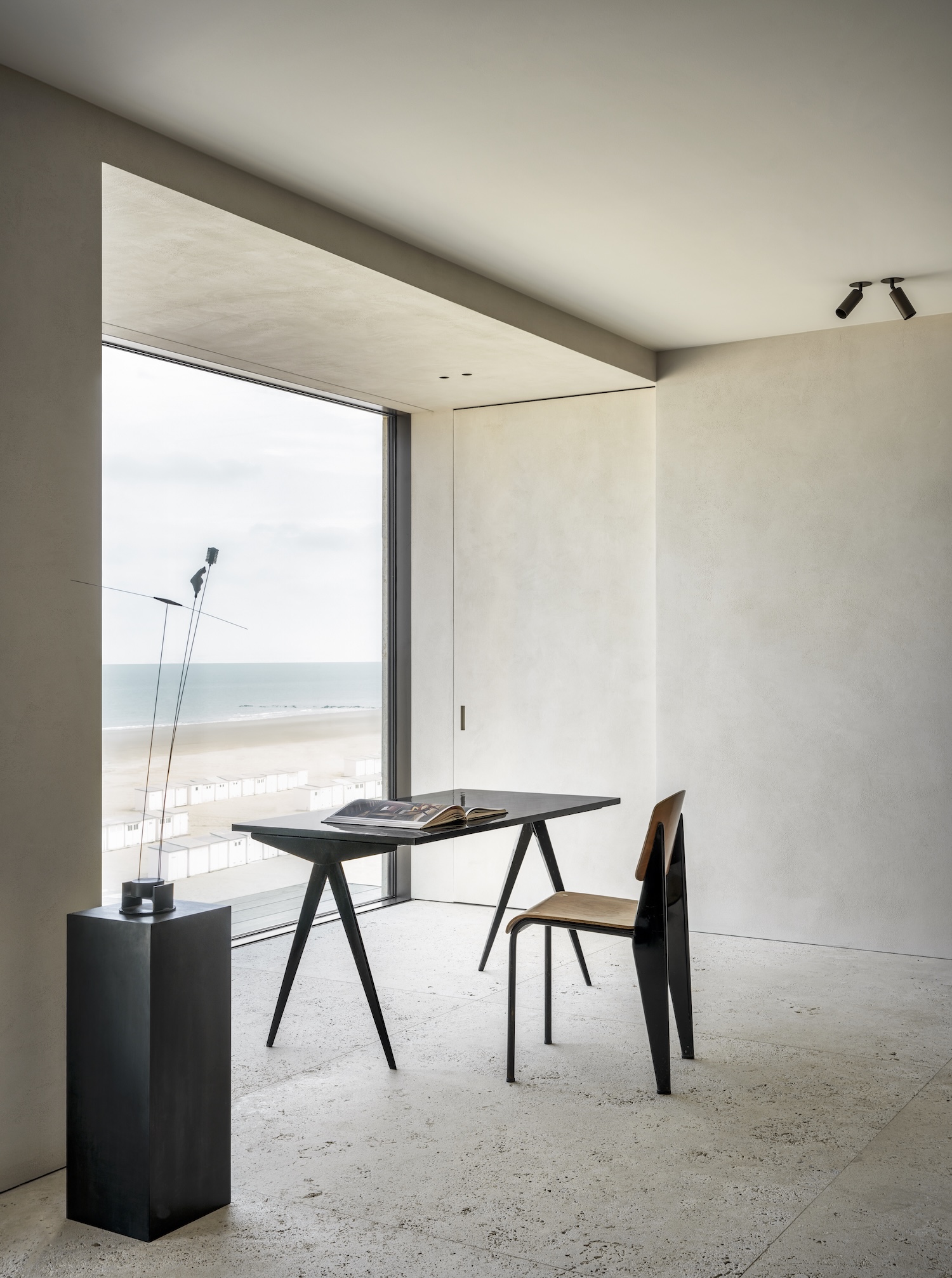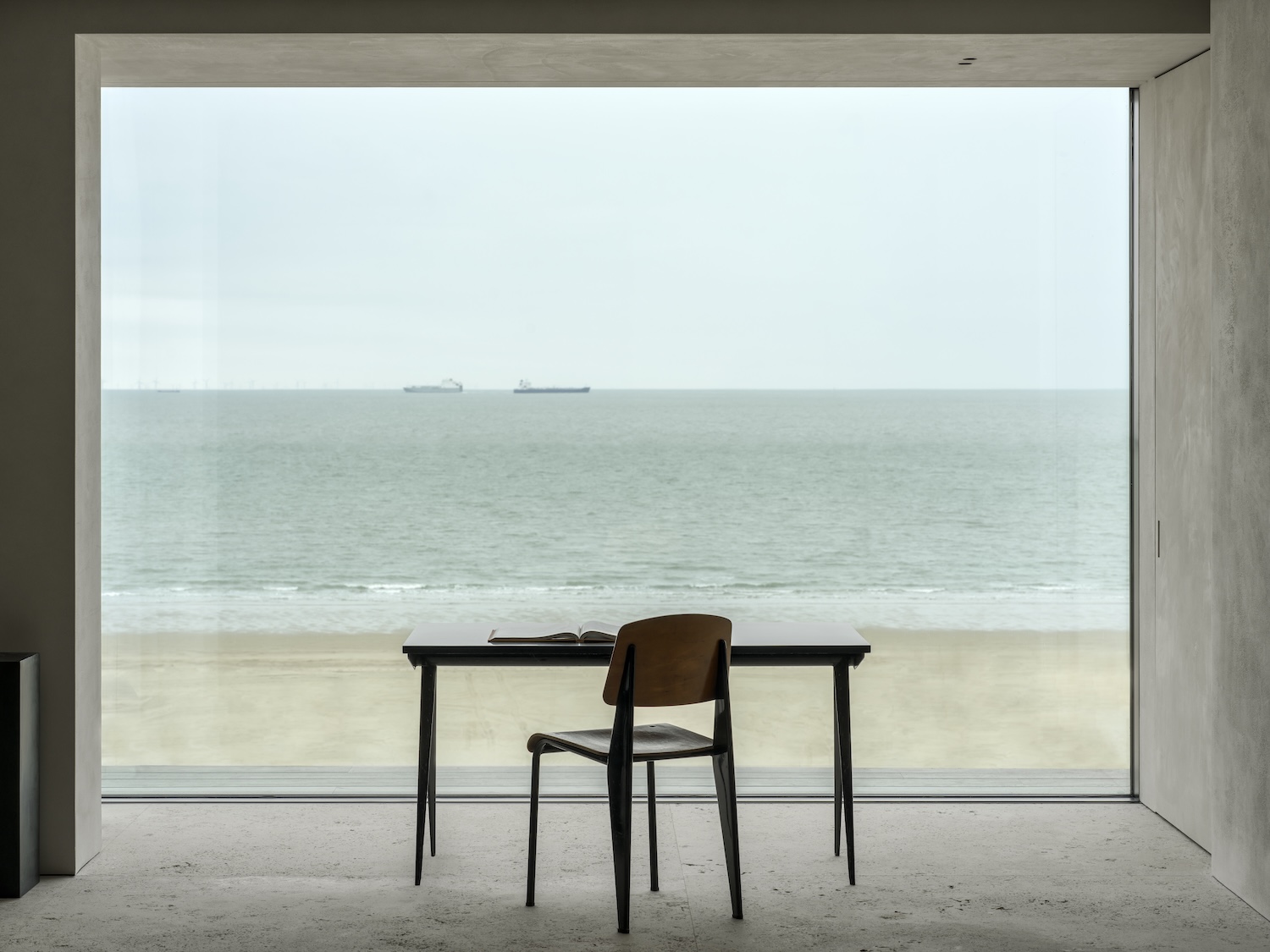DH Apartment is a pure, organic space located in Knokke, Belgium, designed by Vincent Van Duysen. A shaft of light cuts across the fourth-floor Belgian apartment, illuminating particles of sea salt that hang suspended in the air. This is not merely a holiday home but a carefully orchestrated breath, held and released in the continuous rhythm of family life by the coast. The architectural strategy here is one of concealment and revelation. Custom-designed volumes do double duty as both functional storage and spatial organizers, creating a choreography of movement through the apartment that feels both intuitive and considered. These chestnut-clad forms—warm and tactile—serve as counterpoints to the apartment’s abundant natural light, absorbing and reflecting it in equal measure.
The choice of materials draws directly from the coastal context while avoiding literal maritime references. Light sandstone floors capture the essence of nearby beaches, their veining creating subtle textural narratives underfoot. The walls, finished in textured plaster, respond to changing light conditions throughout the day, much like the sea itself. This approach places DH Apartment within a broader contemporary movement toward “quiet luxury”—spaces that whisper rather than shout their material quality and craftsmanship. There are echoes here of mid-century Scandinavian summer houses, where natural materials and spatial flow took precedence over decorative elements. Yet the execution feels thoroughly contemporary in its precision.
The apartment’s organization reveals a thoughtful hierarchy of privacy. Social spaces and the master bedroom embrace sea views, while the children’s bedrooms—each with an en-suite bathroom—create private retreats at the rear. This arrangement acknowledges the different rhythms of family holiday life: moments of togetherness balanced with necessary solitude. What distinguishes DH Apartment is its restraint. The palette of chestnut, sandstone, and textured plaster creates a coherent material dialogue without resorting to the coastal clichés of blue and white. Instead, the design achieves a connection to place through quality of light and spatial generosity.
